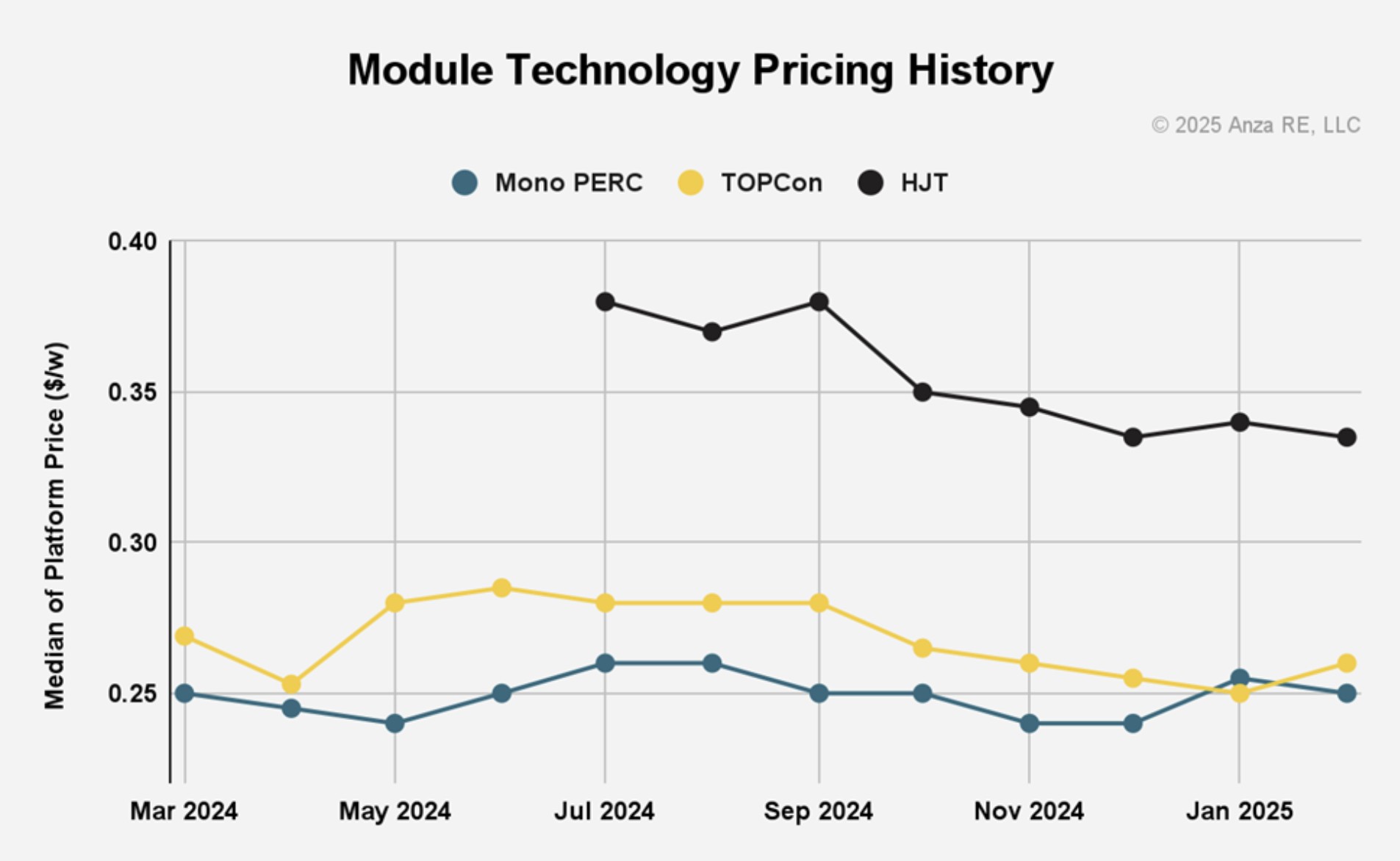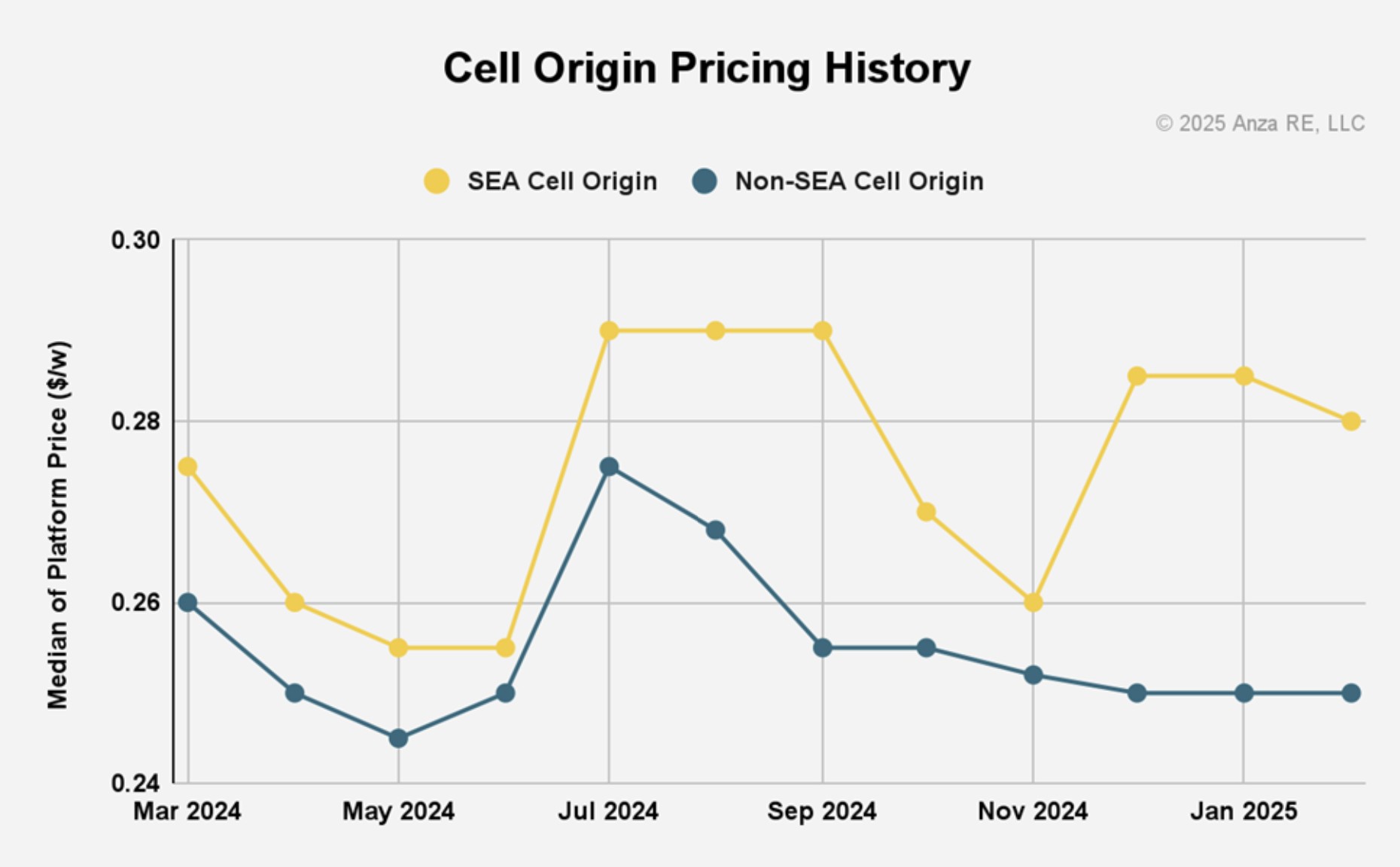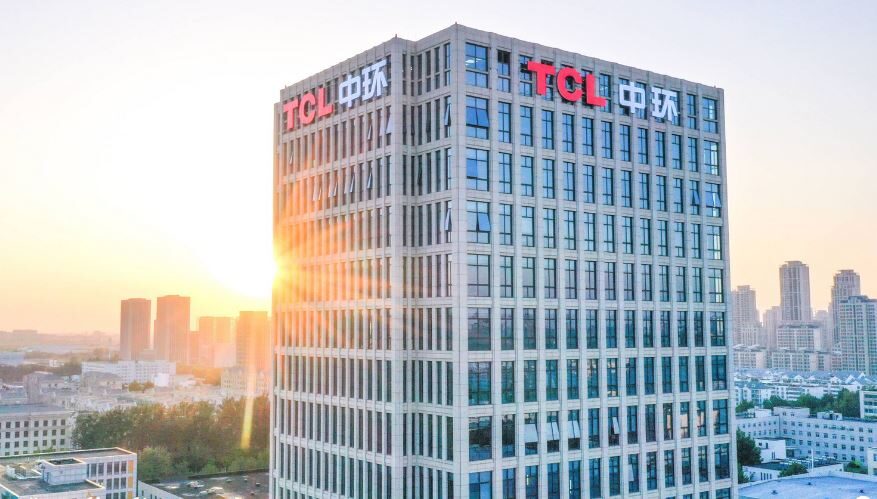US solar module prices rose in December 2024 for the first time since last summer, driven by tariff adjustments and patent litigation uncertainty, according to Anza. While prices have stabilized, module type, cell origin, and geopolitical factors continue to shape the market.
From pv magazine USA
The US solar module market recorded a 4% price increase in Decembern 2024, rising by $0.01/W to $0.26/W, the first uptick since summer. Prices have stabilized at that level, Anza said in its “Q1 2025 Solar Module Pricing Insights” report.
Anza said the December-to-January price increase reflected market recalibration in response to tariff impacts. By February, buyers appeared to have a clearer understanding of where potential US tariffs might focus, allowing prices to settle.

Globally, module pricing in China has seen a slight increase. While modules manufactured in China do not enter the US market directly, these price shifts may have downstream effects on global supply chains.
Module pricing continues to evolve based on technology type. The most notable shift has been in heterojunction (HJT) modules, which have declined in price from $0.38/W in July to $0.34/W in February – nearly a 10% drop, including a 2.9% decrease since November.
Anza notes that HJT manufacturers appear to be testing price elasticity while promoting the technology’s higher efficiency, lower temperature coefficients and improved cold-weather performance — features they hope will justify a premium.

Meanwhile, tunnel oxide passivated contact (TOPCon) module prices have held around $0.26/W since November. Although the technology previously commanded a premium due to its performance, recent patent litigation among tier-1 suppliers has clouded the outlook. Anza reports that although concerns over retroactive fines and disrupted supply have emerged, most buyers view the risk as low and continue to value TOPCon’s performance.
However little, the litigation pressures and political uncertainty are nudging some buyers toward less efficient — but more affordable – mono passivated emitter and rear cell (PERC) modules. These modules have seen a 4.2% price increase since November, reaching $0.25/W. Anza said that its market share has grown as buyers hedge against supply risks and seek pricing stability.
Section 201 import tariffs are now fully baked into the market, according to Anza.
Modules using cells from Cambodia, Malaysia, Thailand and Vietnam — countries affected by the policy — saw a 7.7% price increase from November into December. While those prices have since eased slightly, they remain elevated. In contrast, modules using non-Southeast Asian cells fell 0.8% during the same period, reflecting more competitive pricing.
Anza compiled its data from 35 module vendors, representing 95% of the market for its report.

This content is protected by copyright and may not be reused. If you want to cooperate with us and would like to reuse some of our content, please contact: [email protected].











